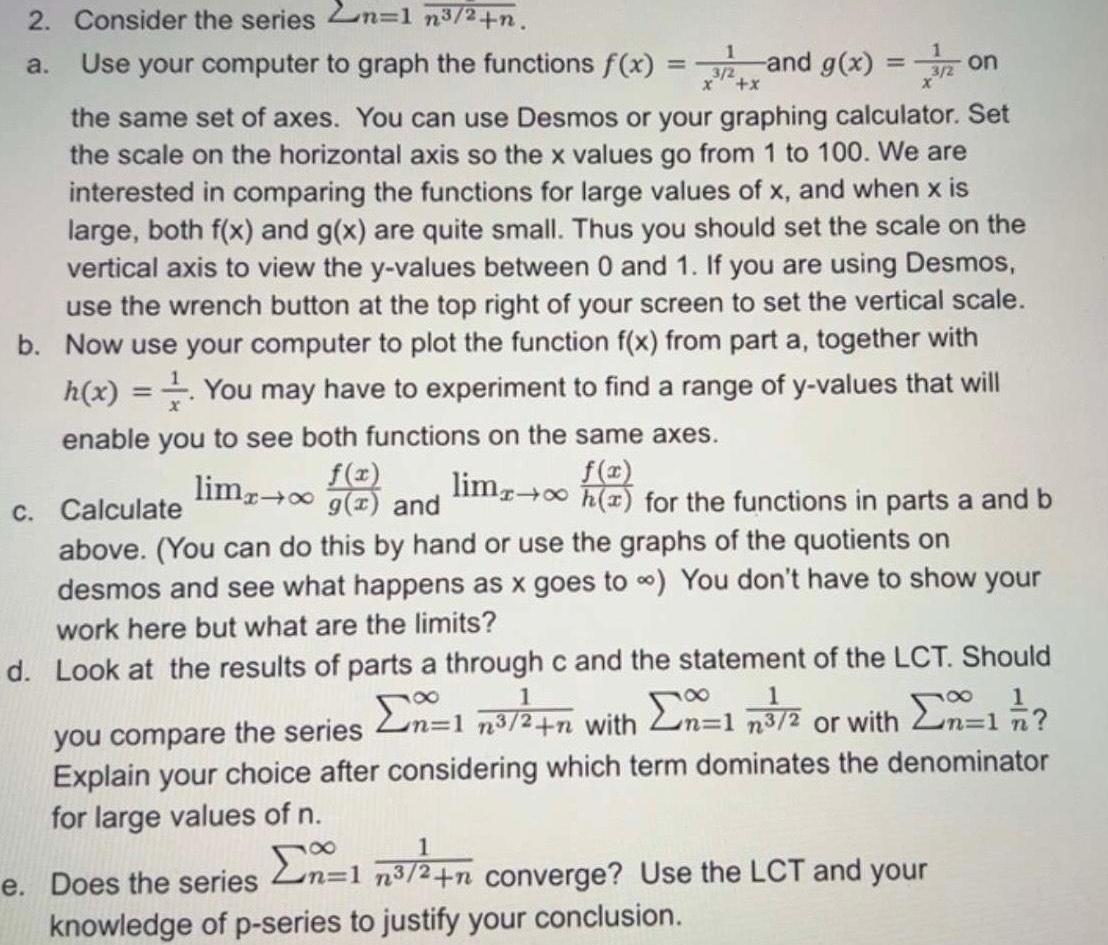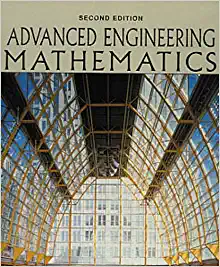Answered step by step
Verified Expert Solution
Question
1 Approved Answer
2. Consider the series 2n=1 n/2+n. 1 a. Use your computer to graph the functions f(x) = 3/2 x +x and g(x) 1 =

2. Consider the series 2n=1 n/2+n. 1 a. Use your computer to graph the functions f(x) = 3/2 x +x and g(x) 1 = 3/2 On the same set of axes. You can use Desmos or your graphing calculator. Set the scale on the horizontal axis so the x values go from 1 to 100. We are interested in comparing the functions for large values of x, and when x is large, both f(x) and g(x) are quite small. Thus you should set the scale on the vertical axis to view the y-values between 0 and 1. If you are using Desmos, use the wrench button at the top right of your screen to set the vertical scale. b. Now use your computer to plot the function f(x) from part a, together with h(x) = You may have to experiment to find a range of y-values that will enable you to see both functions on the same axes. c. Calculate f(x) lim 1x g(x) and f(x) lim h(x) for the functions in parts a and b above. (You can do this by hand or use the graphs of the quotients on desmos and see what happens as x goes to ) You don't have to show your work here but what are the limits? d. Look at the results of parts a through c and the statement of the LCT. Should you compare the series n=1 2+n with n=1 3/2 or with 1 Explain your choice after considering which term dominates the denominator for large values of n. 1 e. Does the series n=1 n3/2+n converge? Use the LCT and your knowledge of p-series to justify your conclusion.
Step by Step Solution
There are 3 Steps involved in it
Step: 1

Get Instant Access to Expert-Tailored Solutions
See step-by-step solutions with expert insights and AI powered tools for academic success
Step: 2

Step: 3

Ace Your Homework with AI
Get the answers you need in no time with our AI-driven, step-by-step assistance
Get Started


